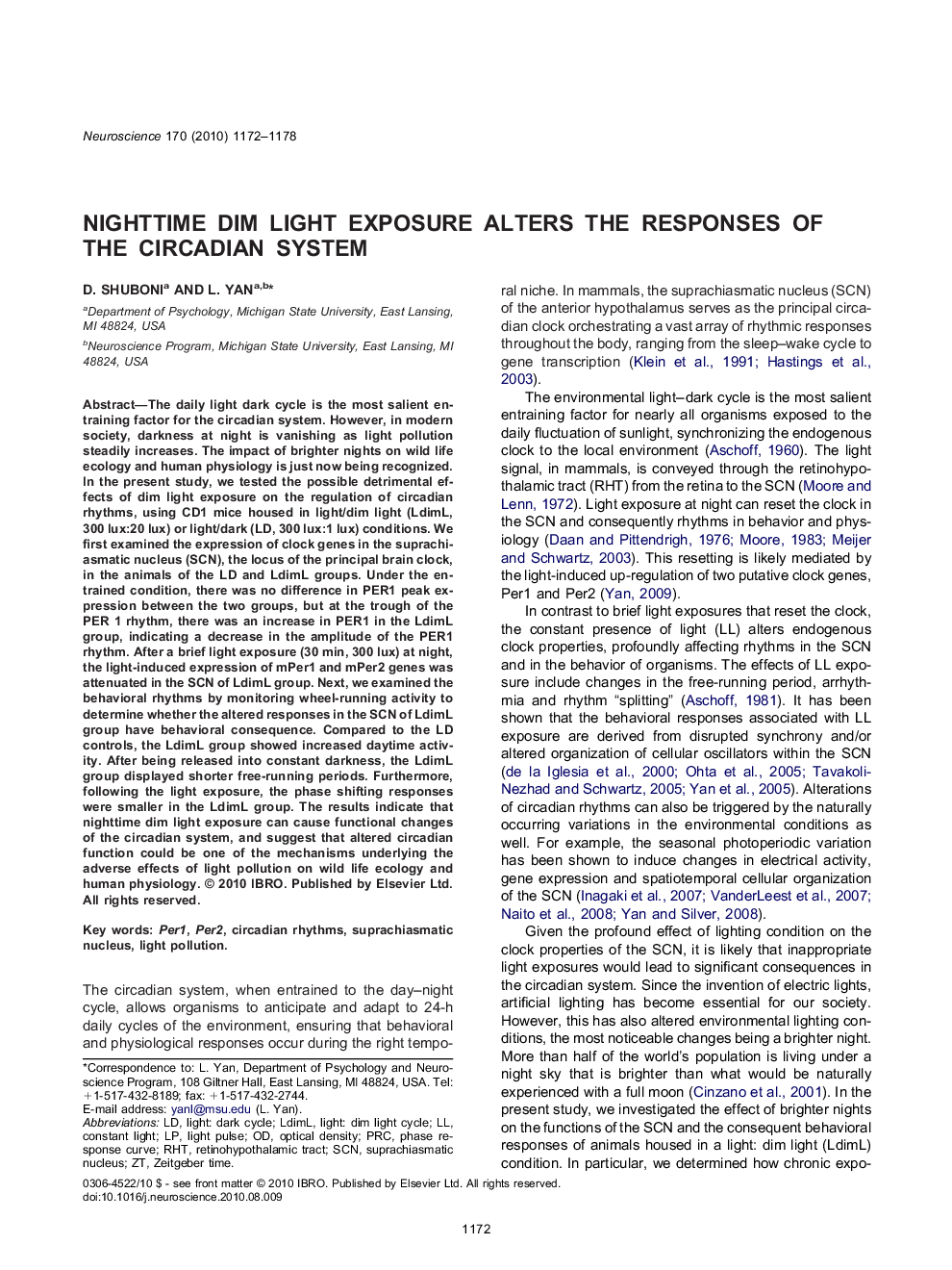| کد مقاله | کد نشریه | سال انتشار | مقاله انگلیسی | نسخه تمام متن |
|---|---|---|---|---|
| 4339153 | 1614905 | 2010 | 7 صفحه PDF | دانلود رایگان |

The daily light dark cycle is the most salient entraining factor for the circadian system. However, in modern society, darkness at night is vanishing as light pollution steadily increases. The impact of brighter nights on wild life ecology and human physiology is just now being recognized. In the present study, we tested the possible detrimental effects of dim light exposure on the regulation of circadian rhythms, using CD1 mice housed in light/dim light (LdimL, 300 lux:20 lux) or light/dark (LD, 300 lux:1 lux) conditions. We first examined the expression of clock genes in the suprachiasmatic nucleus (SCN), the locus of the principal brain clock, in the animals of the LD and LdimL groups. Under the entrained condition, there was no difference in PER1 peak expression between the two groups, but at the trough of the PER 1 rhythm, there was an increase in PER1 in the LdimL group, indicating a decrease in the amplitude of the PER1 rhythm. After a brief light exposure (30 min, 300 lux) at night, the light-induced expression of mPer1 and mPer2 genes was attenuated in the SCN of LdimL group. Next, we examined the behavioral rhythms by monitoring wheel-running activity to determine whether the altered responses in the SCN of LdimL group have behavioral consequence. Compared to the LD controls, the LdimL group showed increased daytime activity. After being released into constant darkness, the LdimL group displayed shorter free-running periods. Furthermore, following the light exposure, the phase shifting responses were smaller in the LdimL group. The results indicate that nighttime dim light exposure can cause functional changes of the circadian system, and suggest that altered circadian function could be one of the mechanisms underlying the adverse effects of light pollution on wild life ecology and human physiology.
Journal: Neuroscience - Volume 170, Issue 4, 10 November 2010, Pages 1172–1178